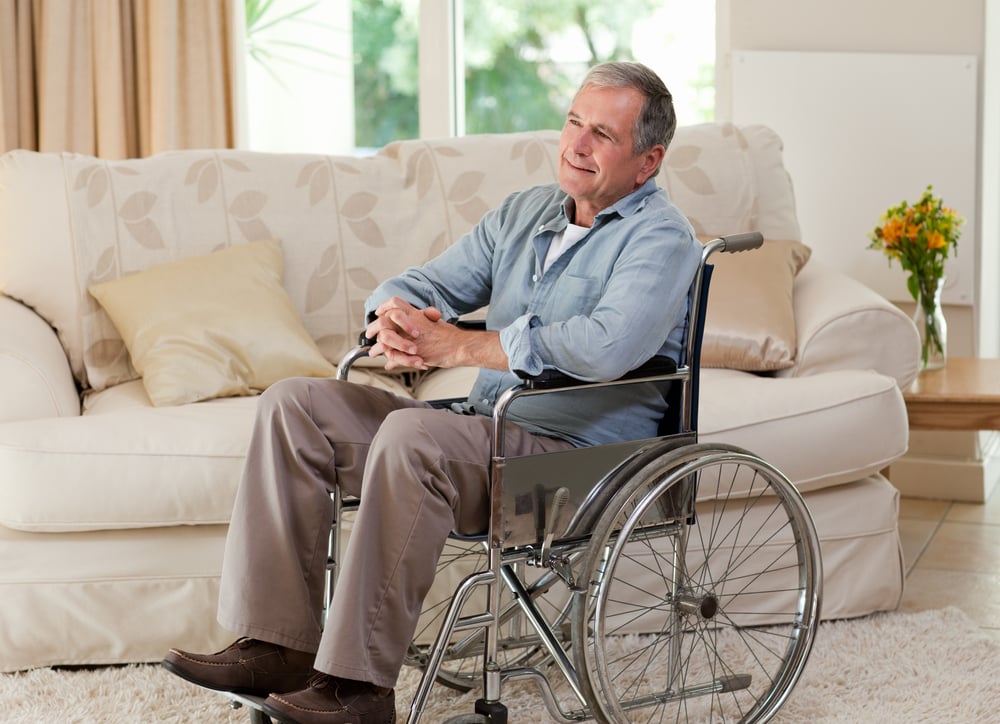March is National Disabilities Awareness month. Let's take some time this month to consider people with disabilities and what we should be aware of, consider, and how we can help.

In my first year of college, I was walking from class out to the parking lot when a man in a wheelchair approached me and asked if I would help him. I said yes and then he asked me to help him in the bathroom. At the age of 18, this was an eye-opening event–and it was also before bathrooms had to conform to title 9. There were no handrails and there was no room to get his wheelchair into a stall. It was difficult at first, but I stood behind him and then held him up while he used the urinal. When I got him back into his wheelchair he asked me if I felt embarrassed, I suppose I had a look of some kind on my face, I really don’t recall how I answered that question but I remember him saying “how do you think I feel when I have to ask someone every day to help me”. From that day forward I waited for him after class to assist him.
People become disabled in a wide variety of ways. Aging, in general, causes disabilities in 20-30% of the senior population. Not being able to do simple tasks of everyday living or take care of themselves they need help from family, friends, and often care, professionals.
Many disabled people want to do as much for themselves as possible. For some, they were doing everything for themselves until just recently. So how can we help other disabled people live more satisfactory lives?
Things to Consider
Able-bodied people often feel uncomfortable around people with disabilities especially when they know them. Most people however have disabled friends or relatives and treat them pretty much like everyone else–except they freely offer help when needed. According to “respect ability”, people feel more comfortable if they know the etiquette most handicapped people appreciate. Here are some of their ideas:
- Treat individuals with disabilities as you would treat any other individual and recognize their uniqueness–if they are in a wheelchair, pull up a chair and talk to them.
- Speak directly to a person with a disability, not to their companion or sign language interpreter. A lack of immediate response does not indicate that the person can’t or won’t respond.
- Do not make decisions on their behalf. Do not tell the individual what to do or use baby talk. Provide every option you provide those without disabilities. If the option chosen presents a difficulty concerning their disability, discuss ways you could modify or adapt the choice.
- Just because someone has a disability, do not assume they need help. Do not give assistance without asking first if help is wanted. You can ask if the person would like help, but don’t ask repeatedly or qualify their response with “are you sure?” Respect someone’s choice even if it looks like they’re struggling. If there is a dangerous situation, help just as you would help someone without a disability.
- Wheelchairs are very personal to their owners. Do not touch or move it without permission, even if someone puts it down or chooses to leave it somewhere. Leaning on someone’s wheelchair is like leaning on their shoulder. Putting something in someone’s carry basket is like putting something in their backpack. It is vital that the owner knows where their equipment is at all times.
- If a person has difficulty speaking, be patient and wait for the person to finish, rather than correcting or speaking for the person. If necessary, ask short or close-ended questions that require short answers, a nod, or a shake of the head. Never pretend to understand if you are having difficulty doing so. Instead, repeat what you have understood and allow the person to respond. The response will clue you in and guide your understanding.
- People who have psychiatric disabilities may have varying personalities and different ways of coping with their disability. Some may have trouble picking up on social cues; others may be supersensitive. One person may be very high energy, while someone else may appear sluggish. Treat each person as an individual. Ask what will make them most comfortable and respect their needs to the maximum extent possible.
- There are visible disabilities as well as non-visible disabilities, meaning not all disabilities are apparent. A person may make a request or act in a way that seems strange to you. That request or behavior may be disability-related. For example, you may give seemingly simple verbal directions to someone, but the person asks you to write the information down. He or she may have a learning disability that makes written communication easier. Even though these disabilities are hidden, they are real.
Be Aware
In our everyday life interactions, we run into so many forms of disability and people trying to cope. For instance, I brought my father to restaurants when he was suffering from Alzheimer’s. Most of the time the wait staff was fantastic giving him the time he needed to make a decision. We learned over time how to help him eliminate some of the choices. When people around us were understanding it made the event go much better.
When we are parking our cars next to the handicap spot it is generally much larger, or it has a special lane marked so handicapped vehicles can extend ramps to get out of the vehicle. Many times people encroach on the handicapped parking to avoid door nicks–now you know!
If you see someone that is struggling with a task they probably are! Simply ask them if you can help–perhaps this moment of kindness will give both them and you that special feeling we get as humans.
Acknowledgments
Respect ability
World Health Organization





